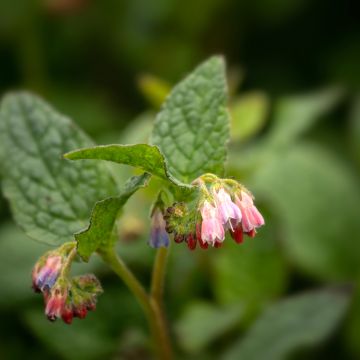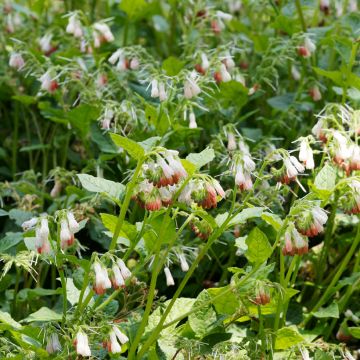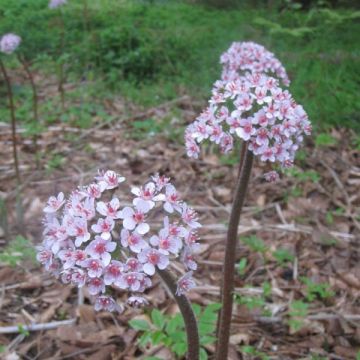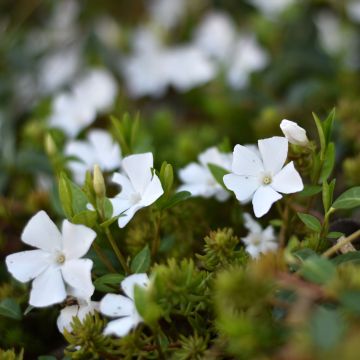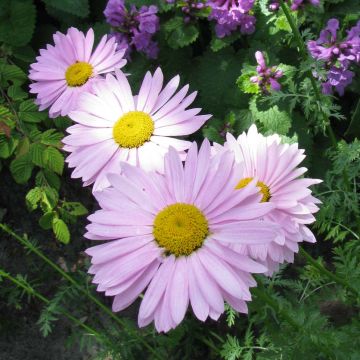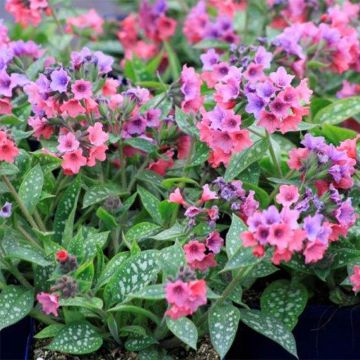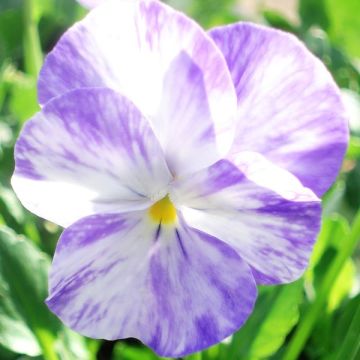

Symphytum officinale - Comfrey
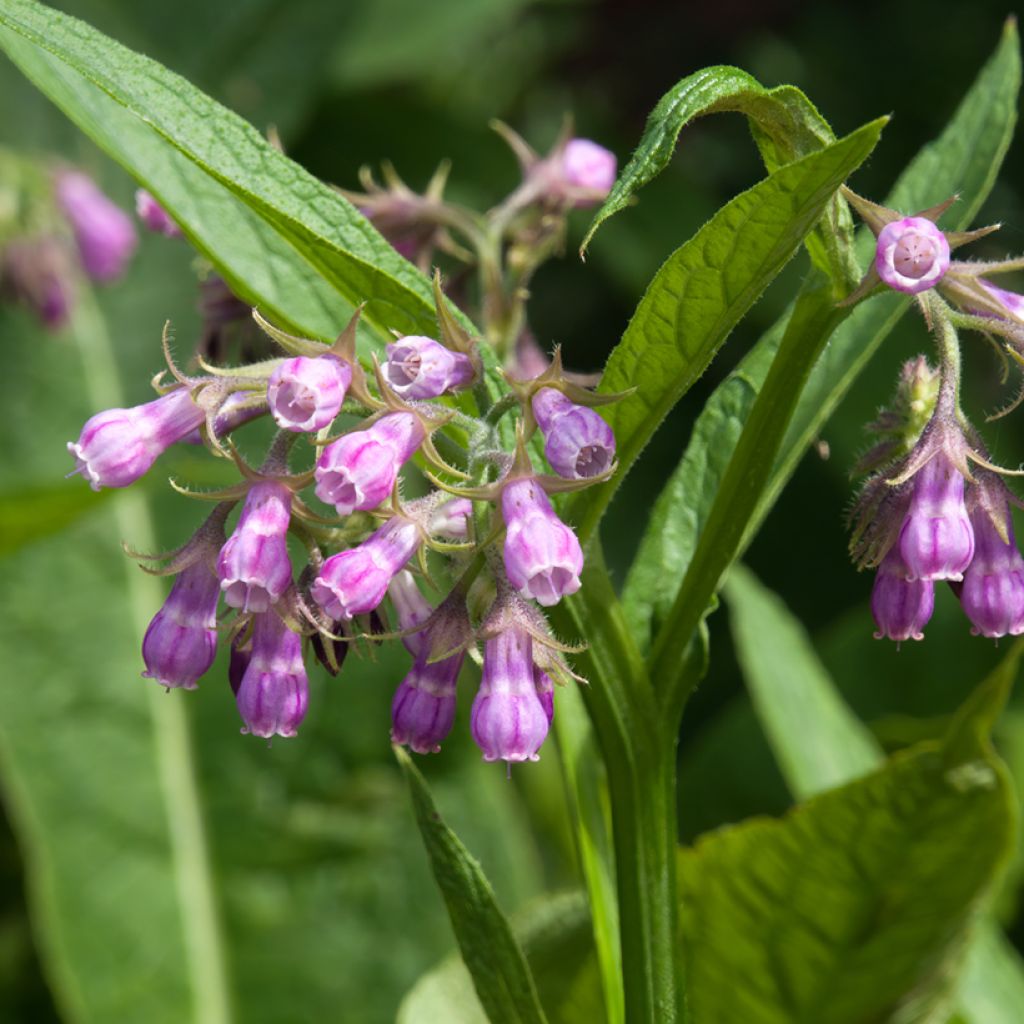

Symphytum officinale - Comfrey
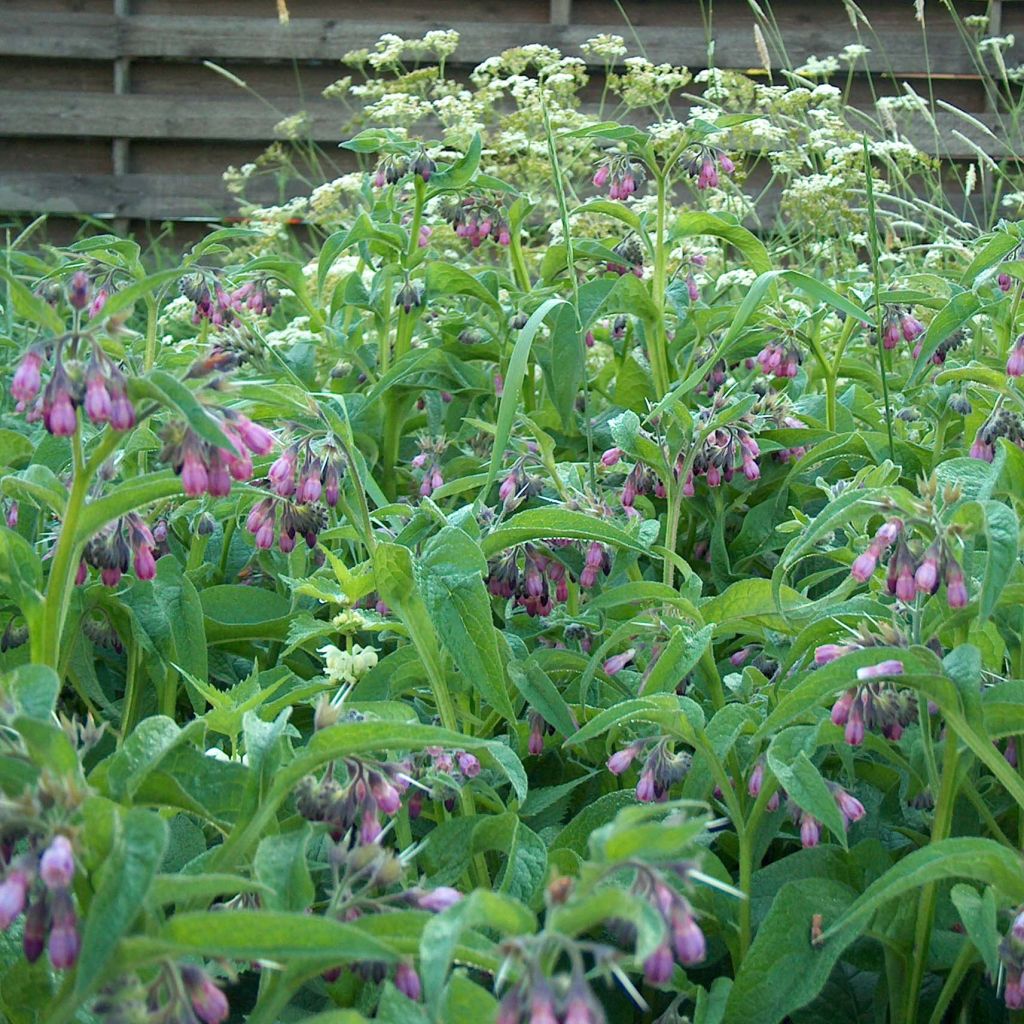

Symphytum officinale - Comfrey
Symphytum officinale - Comfrey
Symphytum officinale
Common Comfrey, Knitbone, Boneset
2 young plants that developed very quickly. A good investment for garden corners to let grow a bit wild. The bumblebees love them.
JCL, 26/08/2025
Special offer!
Receive a €20 voucher for any order over €90 (excluding delivery costs, credit notes, and plastic-free options)!
1- Add your favorite plants to your cart.
2- Once you have reached €90, confirm your order (you can even choose the delivery date!).
3- As soon as your order is shipped, you will receive an email containing your voucher code, valid for 3 months (90 days).
Your voucher is unique and can only be used once, for any order with a minimum value of €20, excluding delivery costs.
Can be combined with other current offers, non-divisible and non-refundable.
Home or relay delivery (depending on size and destination)
Schedule delivery date,
and select date in basket
This plant carries a 12 months recovery warranty
More information
We guarantee the quality of our plants for a full growing cycle, and will replace at our expense any plant that fails to recover under normal climatic and planting conditions.
Would this plant suit my garden?
Set up your Plantfit profile →
Description
Symphytum officinale, more commonly known as Common Comfrey or Greater Comfrey, is a powerful herbaceous perennial that is quite common in our woodlands, near wet areas or ditches bordering rural paths. Despite its rough appearance as a weed, it displays beautiful terminal inflorescences in spring in the form of small, modestly curved clusters, bearing delicate flowers filled with nectar, in shades of white, cream, pink, or violet. Known since ancient times for its medicinal properties, widely used in agronomy or horticulture, it is also a decorative and easy-to-grow plant. It is ideal for shaded or moist areas, even clayey ones, in a garden that leaves room for nature.
Native to Europe, especially central Europe, western Siberia, central Asia and China, greater comfrey belongs to the Boraginaceae family, just like common borage. Quite variable in nature and easily hybridising with other species, common comfrey invariably has a fleshy and brittle stump with a creeping habit, and develops a powerful root system with a black epidermis protecting a mucilaginous and white flesh. The plant quickly reaches a height of 60 to 80cm (24 to 32in), or even much higher in fertile soil, with a spread of 60cm (24in), and forms large colonies. It is entirely covered with iridescent and prickly hairs at the base of its square stems. From April to June, it bears an abundance of nectar-rich bell-shaped flowers in variable colours, grouped in scorpion-like inflorescences at the tips of the stems. At the end of flowering, the upright stems have a trailing aspect. Its large, rough, semi-evergreen leaves are green and leathery, oblong and lanceolate in shape with prominent veins. In shaded exposure, the leaves reach a length of 20 to 25cm (8 to 10in). This hardy perennial readily self-seeds.
In the garden, greater comfrey is one of the least demanding plants, and one that can adapt to the most unfavourable conditions. It prefers humus-rich soils in partial shade or full shade, but it will also thrive in full sun provided the soil remains cool and moist. All cool spaces are suitable for it. It looks beautiful in woodlands and beside water features, and in an informal bed, accompanied by simple plants such as common lemon balm, common borage, Iris giganticaerulea, garden columbines, or Euphorbia robbiae. It can also be paired with shrubs like rhododendron or hydrangea, as well as perennials like wild garlic or bellflower, for example.
Common comfrey gets its vernacular name of "knitbone" from its ability to consolidate fractures and heal wounds. It is used in many fields such as organic agriculture. It is an excellent fertiliser once transformed into liquid manure. In this form, it is also a good repellent against parasites. It is a fortifying plant for animals due to its richness in vitamin B12. In the garden, its powerful roots allow for the loosening and aerating of even the heaviest soils, thus making it possible to replace comfrey once the work is done with a more delicate and demanding plant.
Report an error about the product description
Symphytum officinale - Comfrey in pictures
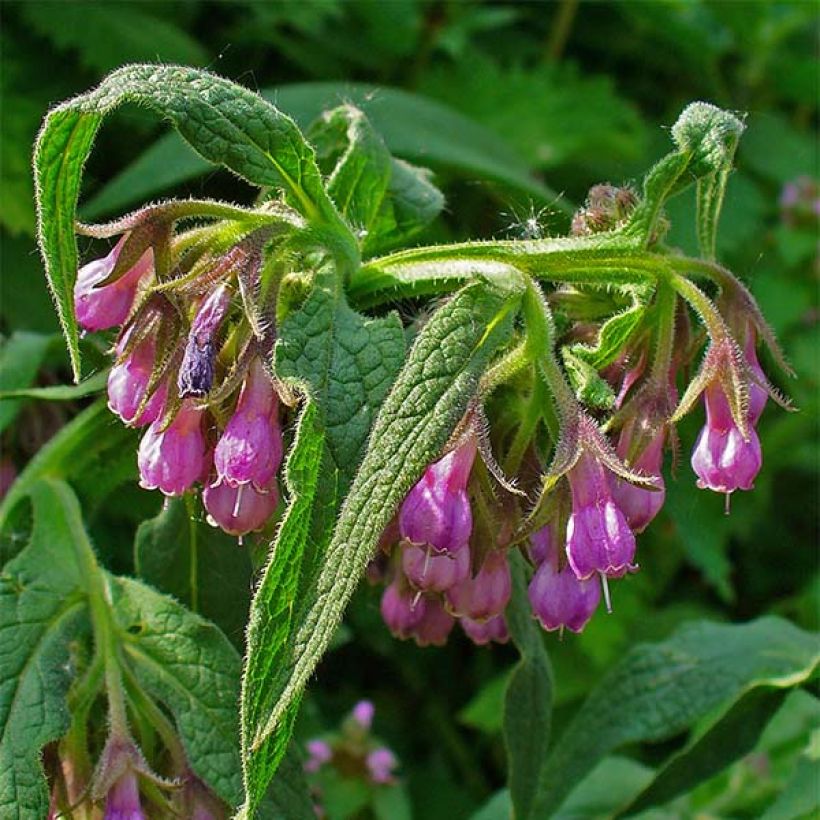



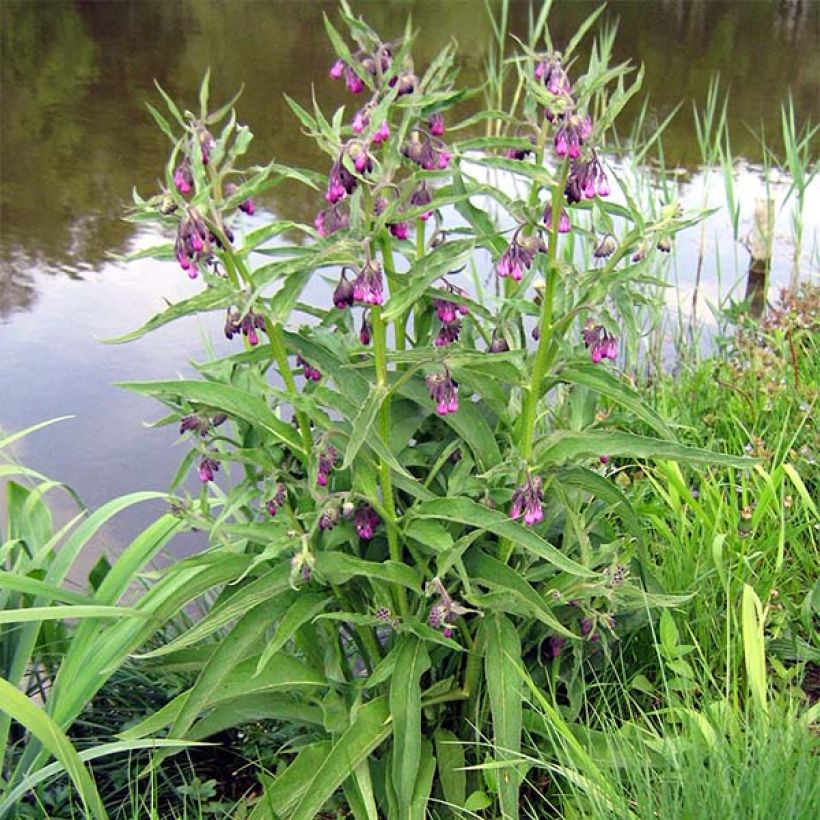

Flowering
Foliage
Plant habit
Botanical data
Symphytum
officinale
Boraginaceae
Common Comfrey, Knitbone, Boneset
Caucasus
Other Symphytum - Comfrey
View all →Planting and care
Plant in moist and humus-rich or even clayey soil. The plant also grows in drier soil, as long as it is deep and fertile, without competition, and placed in the shade. Place comfrey in the sun or partial shade, or even in full shade in a warm climate, and protect it from excessive sunlight. Symphytum does not have any health problems requiring any treatment. Remove faded inflorescences to limit propagation through spontaneous sowing, and make room for this exuberant young plant.
Planting period
Intended location
Care
-
, onOrder confirmed
Reply from on Promesse de fleurs
Similar products
Haven't found what you were looking for?
Hardiness is the lowest winter temperature a plant can endure without suffering serious damage or even dying. However, hardiness is affected by location (a sheltered area, such as a patio), protection (winter cover) and soil type (hardiness is improved by well-drained soil).

Photo Sharing Terms & Conditions
In order to encourage gardeners to interact and share their experiences, Promesse de fleurs offers various media enabling content to be uploaded onto its Site - in particular via the ‘Photo sharing’ module.
The User agrees to refrain from:
- Posting any content that is illegal, prejudicial, insulting, racist, inciteful to hatred, revisionist, contrary to public decency, that infringes on privacy or on the privacy rights of third parties, in particular the publicity rights of persons and goods, intellectual property rights, or the right to privacy.
- Submitting content on behalf of a third party;
- Impersonate the identity of a third party and/or publish any personal information about a third party;
In general, the User undertakes to refrain from any unethical behaviour.
All Content (in particular text, comments, files, images, photos, videos, creative works, etc.), which may be subject to property or intellectual property rights, image or other private rights, shall remain the property of the User, subject to the limited rights granted by the terms of the licence granted by Promesse de fleurs as stated below. Users are at liberty to publish or not to publish such Content on the Site, notably via the ‘Photo Sharing’ facility, and accept that this Content shall be made public and freely accessible, notably on the Internet.
Users further acknowledge, undertake to have ,and guarantee that they hold all necessary rights and permissions to publish such material on the Site, in particular with regard to the legislation in force pertaining to any privacy, property, intellectual property, image, or contractual rights, or rights of any other nature. By publishing such Content on the Site, Users acknowledge accepting full liability as publishers of the Content within the meaning of the law, and grant Promesse de fleurs, free of charge, an inclusive, worldwide licence for the said Content for the entire duration of its publication, including all reproduction, representation, up/downloading, displaying, performing, transmission, and storage rights.
Users also grant permission for their name to be linked to the Content and accept that this link may not always be made available.
By engaging in posting material, Users consent to their Content becoming automatically accessible on the Internet, in particular on other sites and/or blogs and/or web pages of the Promesse de fleurs site, including in particular social pages and the Promesse de fleurs catalogue.
Users may secure the removal of entrusted content free of charge by issuing a simple request via our contact form.
The flowering period indicated on our website applies to countries and regions located in USDA zone 8 (France, the United Kingdom, Ireland, the Netherlands, etc.)
It will vary according to where you live:
- In zones 9 to 10 (Italy, Spain, Greece, etc.), flowering will occur about 2 to 4 weeks earlier.
- In zones 6 to 7 (Germany, Poland, Slovenia, and lower mountainous regions), flowering will be delayed by 2 to 3 weeks.
- In zone 5 (Central Europe, Scandinavia), blooming will be delayed by 3 to 5 weeks.
In temperate climates, pruning of spring-flowering shrubs (forsythia, spireas, etc.) should be done just after flowering.
Pruning of summer-flowering shrubs (Indian Lilac, Perovskia, etc.) can be done in winter or spring.
In cold regions as well as with frost-sensitive plants, avoid pruning too early when severe frosts may still occur.
The planting period indicated on our website applies to countries and regions located in USDA zone 8 (France, United Kingdom, Ireland, Netherlands).
It will vary according to where you live:
- In Mediterranean zones (Marseille, Madrid, Milan, etc.), autumn and winter are the best planting periods.
- In continental zones (Strasbourg, Munich, Vienna, etc.), delay planting by 2 to 3 weeks in spring and bring it forward by 2 to 4 weeks in autumn.
- In mountainous regions (the Alps, Pyrenees, Carpathians, etc.), it is best to plant in late spring (May-June) or late summer (August-September).
The harvesting period indicated on our website applies to countries and regions in USDA zone 8 (France, England, Ireland, the Netherlands).
In colder areas (Scandinavia, Poland, Austria...) fruit and vegetable harvests are likely to be delayed by 3-4 weeks.
In warmer areas (Italy, Spain, Greece, etc.), harvesting will probably take place earlier, depending on weather conditions.
The sowing periods indicated on our website apply to countries and regions within USDA Zone 8 (France, UK, Ireland, Netherlands).
In colder areas (Scandinavia, Poland, Austria...), delay any outdoor sowing by 3-4 weeks, or sow under glass.
In warmer climes (Italy, Spain, Greece, etc.), bring outdoor sowing forward by a few weeks.































